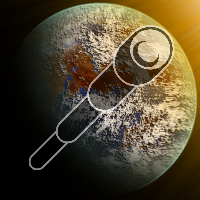Astra Planeta is currently undergoing major revisions, and some parts of this encyclopedia contain information that is inaccurate with respect to current canon. Your patience and readership is appreciated!
ASTRA PLANETA WON BEST ARTICLE AT THE 2024 WORLDBUILDING AWARDS!
The winners of the 2024 Worldbuilding Awards have been announced, and Alone Together won the category of Best Article!!! I am so immensely honored to be chosen by the denizens of World Anvil as one of the best worldbuilders on the site! Congratulations to my fellow winners and nominees!!!

The single most critical piece of technology in any spacefaring civilization's vast tool kit is the rocket engine. Without rocket propulsion, most sophonts could not even get to the upper atmosphere of their homeworlds, let alone ascend to orbit and beyond. Thus, the rocket engine -modernly referred to more broadly as a "reaction engine," "drive system," or simply "drive"- is one of the unifying elements of all civilizations at or above technological level 8. There is a very broad array of rocket propulsion methods, and no two sophonts will follow the exact same techno-developmental pathway, but almost every known civilization utilizes the same fundamental principles in designing their drive systems. The exception to this is the highly advanced and reclusive Xib Zjhar, who have somehow achieved the physics-defying holy grail of space travel: reactionless thrust. All other known drives are classified as reaction engines, as discussed below.
The Astra Planeta universe and all related works © 2018-2024 Douglas Marshall ("SpyglassRealms"), all rights reserved. Thanks to Hanhula, Nimin, Annie, and the other fine folks in the WorldAnvil Discord for their invaluable help with the world formatting and CSS! Art assets without credits displayed are created by SpyglassRealms. Assets not created by SpyglassRealms are properly credited and are either public domain content, Creative Commons Attribution, or displayed with the permission of the creator(s).

Comments
Please Login in order to comment!




This is really cool! I like how you included the equations to help ground the designs in reality.
Thank you! The Tsiolkovsky equation is the most essential thing needed to understand how rockets work, and also what the stats mean for the specific engine designs I'll be posting in the coming days. Δv, specific impulse, and mass ratios are all terms that pop up again and again.